Florals, Bees and Vintage Cars: The Creative Life of Diane Morgan
Award winning desert artist and photographer, Diane Morgan, may be soft-spoken, but her paintings, whether watercolor, oils or acrylic, pack a powerful punch. Using lighting effects, reflected surfaces, exaggerated contrasts and unusual compositions, Morgan transforms the simple into the “un-ordinary, not-so-still life”. Her work has been featured in numerous art magazines, she has won many prestigious painting awards and her audience includes museums, galleries and private collections.
I met Morgan at her studio space located at the Coachella Valley Arts Alliance in late January.

Diane: A friend of mine had a 1957 Chevy and he asked me to paint it. Surprisingly it became my #1 best seller and was featured on a private wine label for participants in the annual “Lost in the 50’s” car show in Sandpoint, Idaho. My vintage cars have become very popular and continue to be great promotional pieces.
Morgan holds a Bachelor of Arts in Fine Arts from the University of Michigan where she studied photography and painting. She moved to California with her husband in 1988.
Diane: I always felt I was an artist, but I never really considered it as a career. I went off to college as a language major. I wanted to be an interpreter, to work for the United Nations, but as it turned out I didn’t really enjoy the classes. There was so much literature… analyzing books in French and Russian…it was endless; so, in my junior year I switched to painting. My first choice was photography, but I smoked in those days and they had a rule that you couldn’t smoke in the darkroom, so I switched to painting (laughs). I’m glad I’m a painter but I still do photography and have won several photography awards and… I don’t smoke. In the summers during college I would waitress and a customer who owned an advertising agency asked me if would work for him when I graduated. I agreed. At that time, I couldn’t imagine painting as a career, so I went straight to advertising after graduation.
Diane: I managed the public arts program for the city of Palm Springs for eleven years and I took early retirement. About ten years into retirement I thought about teaching. I’m so happy I made that decision because prior to that I was painting only a little. Teaching motivated me to paint more and hone my style. It was so much more than painting alone. Now I can’t wait to get up in the morning. I have so much to do, so many different things to do. This season for instance, I will be teaching six days a week.
Diane: I don’t have as much time to do as many big pieces as I would like, and I have about 220 unfinished watercolors in a stack of boxes of half-finished things; most of them unfinished because I can’t complete them in the two-hour class time. Most of my day is spent getting ready for classes so when I’m not teaching, I am prepping for classes, drawing my subject matter and preparing the canvas. In addition, I entered 24 competitions last year. It takes a lot of time to get organized for all of that.
Diane: Well, it’s financially beneficial, but most of all, I meet such interesting people. So many people who live and visit the desert have done such interesting things and their stories are fascinating.
Diane: Bill Schinsky, Executive Director of Coachella Valley Arts Alliance recommended me as one of the choices for the magazine cover. They came out to photograph me and it was a great experience. It was funny, I spent a great deal of time making sure my studio was immaculate, but they wanted to photograph me with work in progress…my tools and paints around me.
Diane: I like working in a neat space but with everything out…all my supplies out on a table. The more tables I have, the more things I will put on them…but it will be neat!
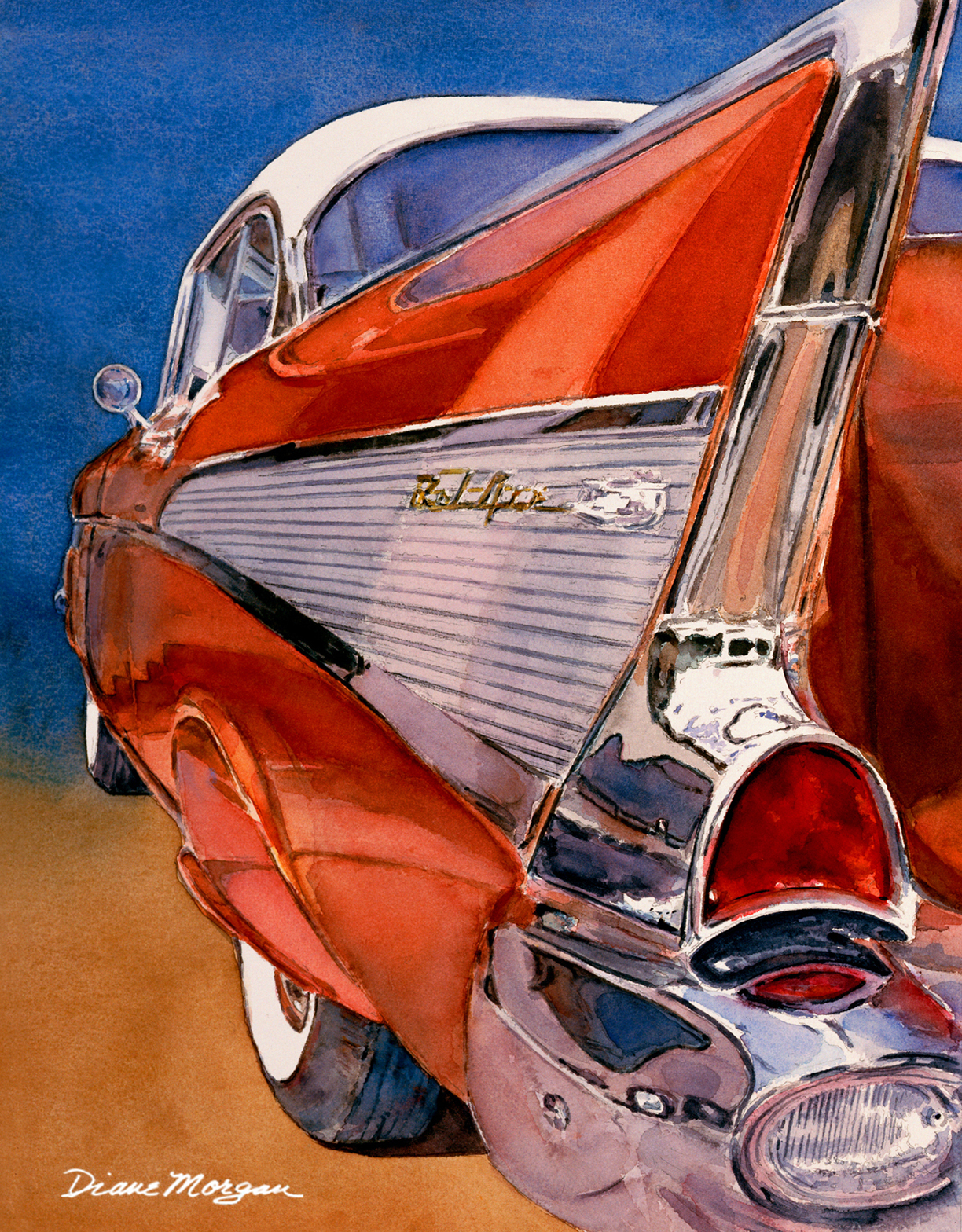
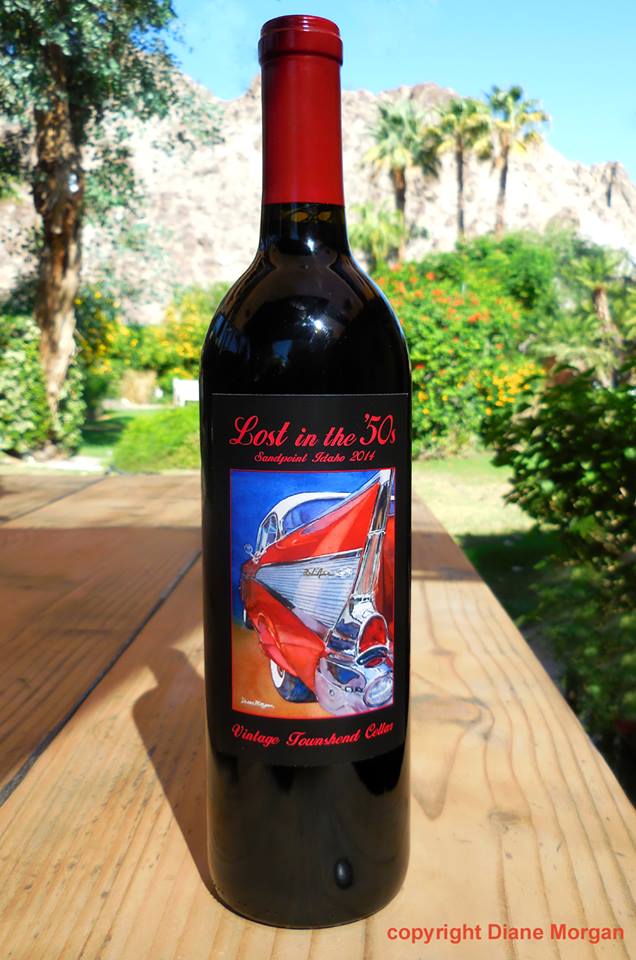
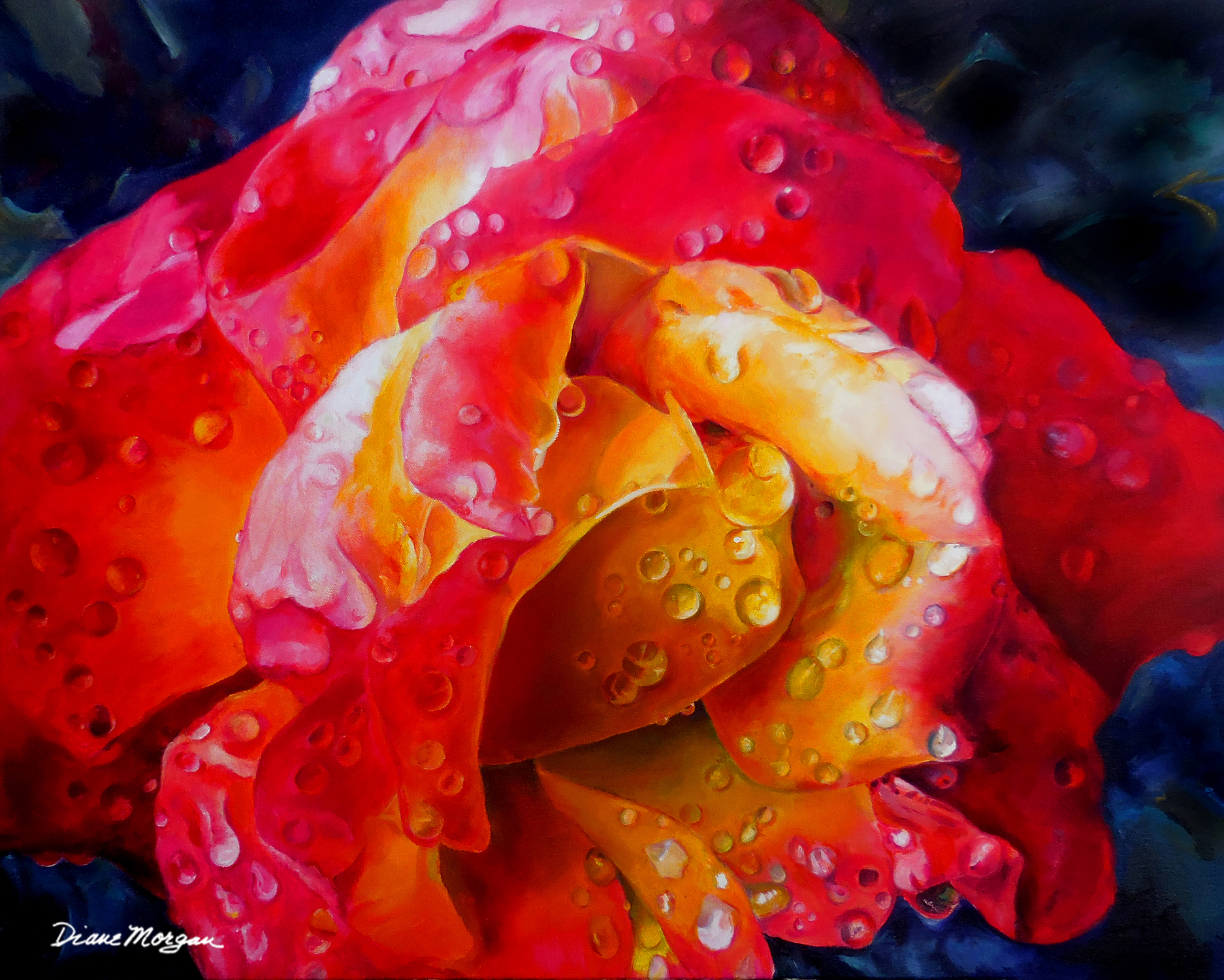
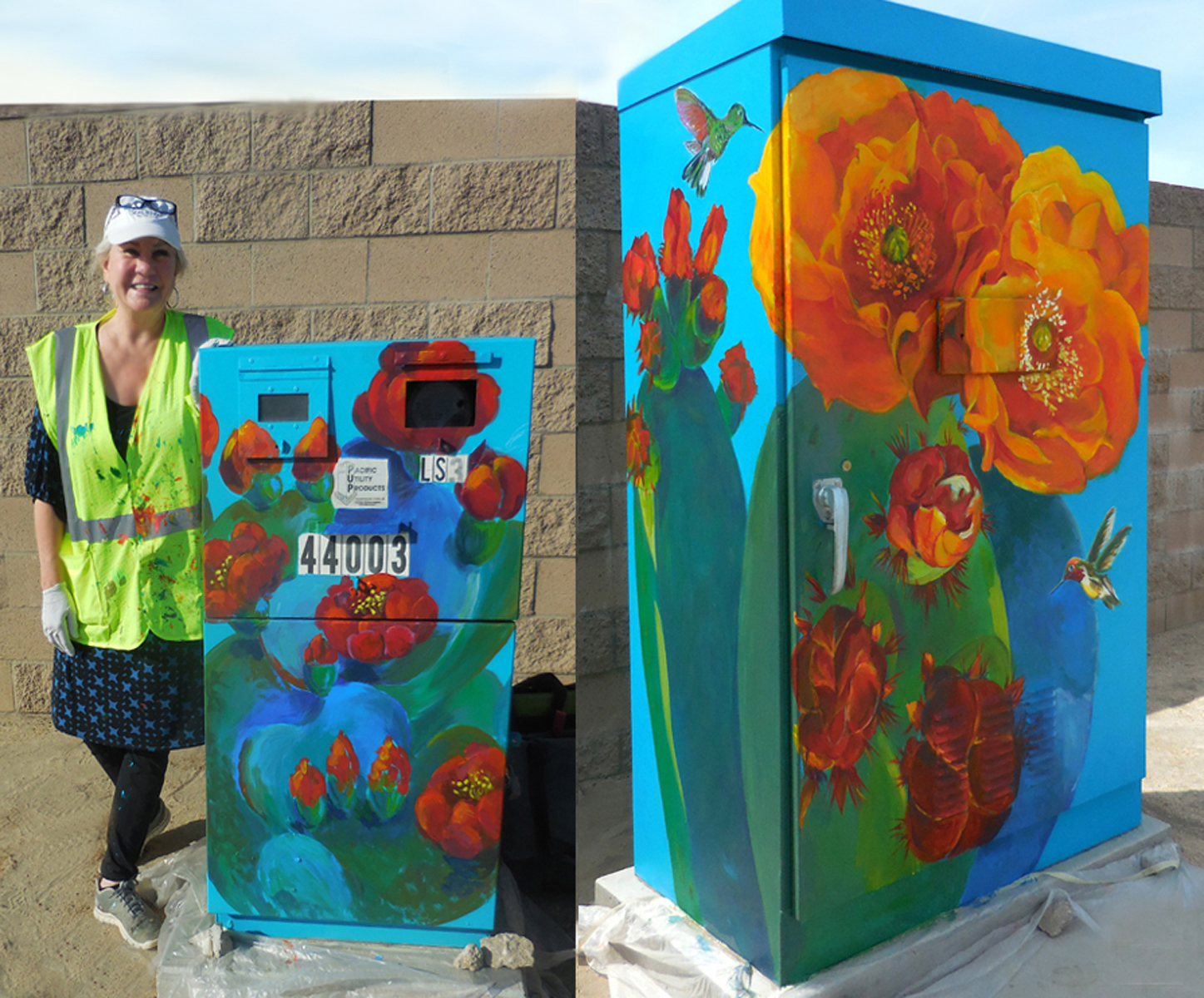
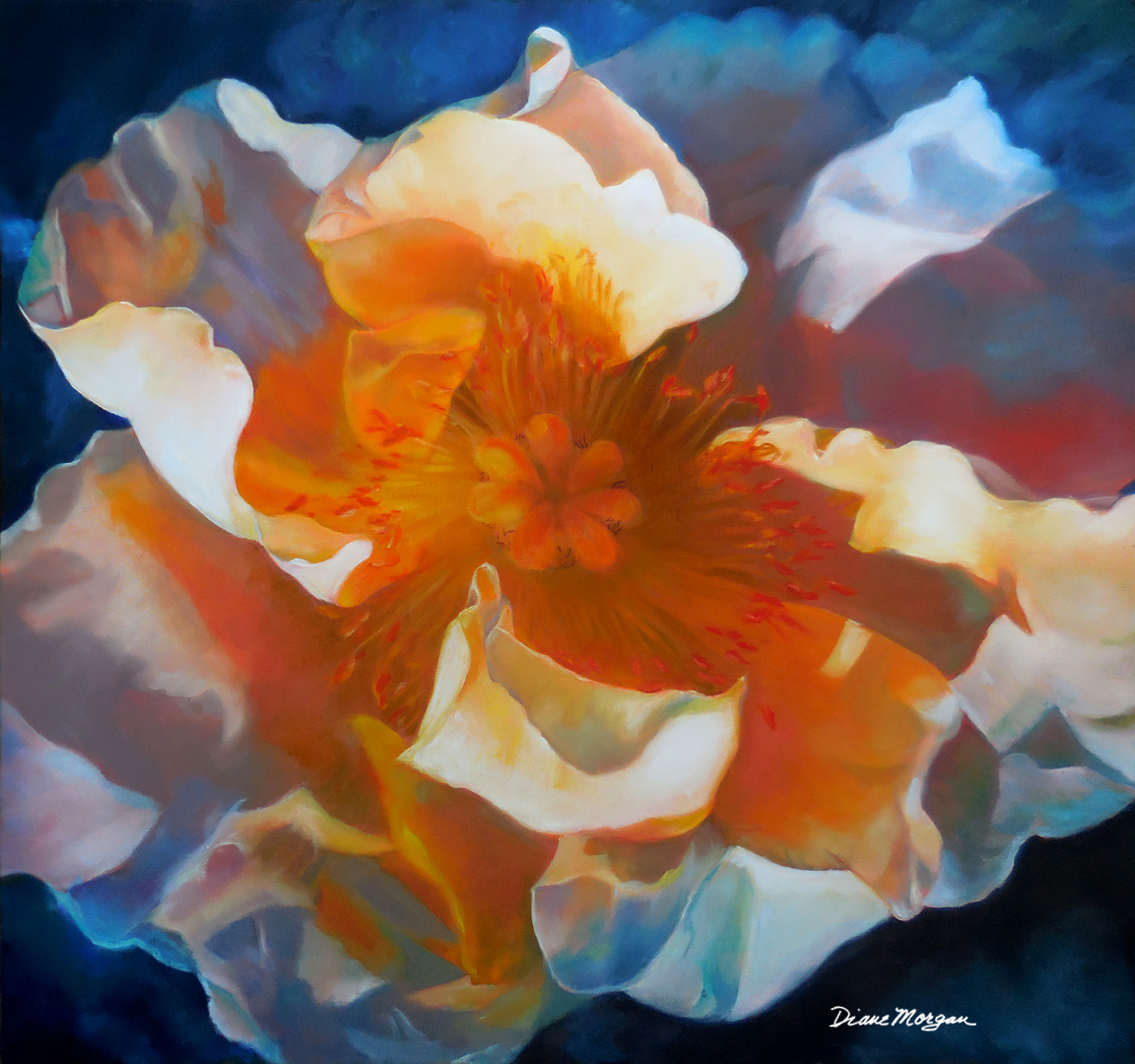
Diane: Certainly, O’Keeffe and I would say DaVinci because he was so brilliant in so many different areas. Some students say they want to paint like me, but I tell them no, you don’t; you want to paint in your own style. In my watercolor classes students often paint along with me. Learning how to paint with watercolor requires more technique and you really need to know what you’re doing, so students then try to follow my lead, but in the oil and acrylic classes, the students often bring their own things to paint. Oils are easier to correct and change so the students seem ready to go on their own.
Diane: The physical aspect can be hard. When I am teaching, I don’t feel it but at the end of some days it can be, ‘OH MY GOSH’.
Diane: No, because I feel better doing things. I feel it makes you live longer and smarter and in truth, painting and teaching is not work for me.
Diane: I would always do it in some way. The good thing about teaching is that I am also learning and engaged in my work and the world around me. I’m watching YouTube videos for research, discovering technical issues as well as being aware of the hazards of painting that I didn’t really consider in the past. I tell everyone to wear gloves, remind them that ventilation is important, to be aware of the cadmium in paints, and when I use oils, I use only water-soluble paints; using just a little water on my knife.
Diane: Even though I had a good career in advertising, and I have no regrets, I would say to her, get your Master of Arts and live an artist’s life
Diane: Every year I try to push my boundaries. This year I painted the traffic signal boxes that were part of the art in public spaces project in the desert. It was the most physical project I have ever done; eight feet tall and boy, was it was hot and windy painting outside! But it felt great doing it. I have also applied for an artist-in-residence program and while they tend to take younger people, I think it would be fun to do that. I really love what I am doing now, and I look forward to discovering what next will inspire my creative spirit.
I hope you will visit Diane Morgan’s website at www.dianemorganfineart.com.
